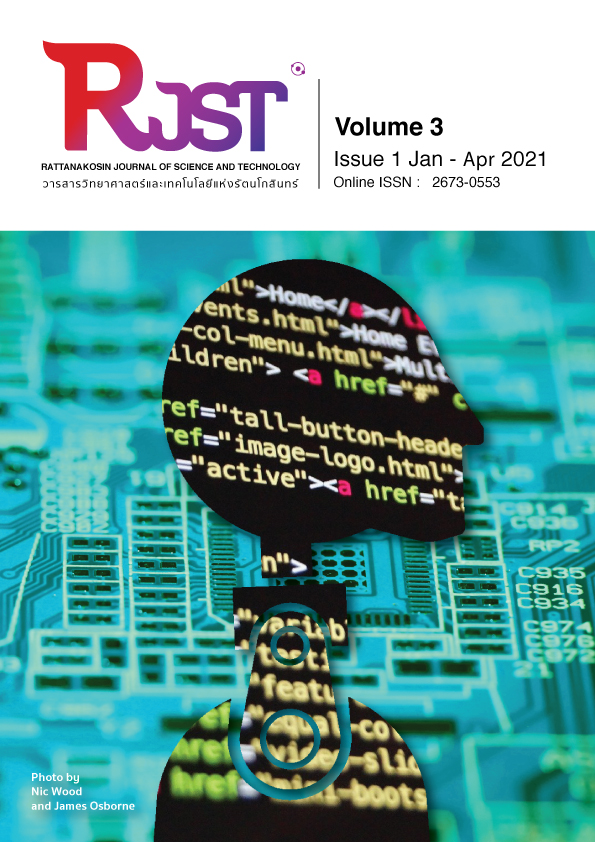The application of plastic with mixed spent coffee grounds for LED lamp การประยุกต์พลาสติกผสมกากกาแฟสำหรับโคมไฟแบบหลอดแอลอีดี
Main Article Content
Abstract
The plastic composite with spent coffee ground addition 1, 2, 3, 4 and 5 g per Polyethylene 20 g, there were mixed with hot plate temperature 100 oC It formed to shape by plastic plate mold with varying thickness 1, 2 and 3 mm. The result of addition spent coffee ground, the plastic composites were presented the decreased density, opaque characteristic and trended to dark brown color. The effect of transparent resistance of plastic composite plastic improved the adsorb the light incident that corresponded with increasing thermal conductivity. The plastic composite was good conducted the heat flow from the leading light source. It affected the bended structure of plastic under loading force. The conclusion that it was clearly dominated the thermal property in plastic composite by the spent coffee ground content.
Article Details
The content within the published articles, including images and tables, is copyrighted by Rajamangala University of Technology Rattanakosin. Any use of the article's content, text, ideas, images, or tables for commercial purposes in various formats requires permission from the journal's editorial board.
Rajamangala University of Technology Rattanakosin permits the use and dissemination of article files under the condition that proper attribution to the journal is provided and the content is not used for commercial purposes.
The opinions and views expressed in the articles are solely those of the respective authors and are not associated with Rajamangala University of Technology Rattanakosin or other faculty members in the university. The authors bear full responsibility for the content of their articles, including any errors, and are responsible for the content and editorial review. The editorial board is not responsible for the content or views expressed in the articles.
References
Garlotta, D. (2001). A literature review of poly (Lactic Acid), Journal of Polymers and the Environment, 63-84.
Jiang, H., Kamdem, DP. (2004). Development of polyvinyl chloride)/wood composites. A literature review, Journal Vinyl&additive Technology, 10, 59-69.
Chitra, N.J., Vasanthakumari, R., Amanulla, S. (2014). Preliminary studies of the effect of coupling agent on the properties of spent coffee grounds polypropylene biocomposites, International Journal of Engineering Research and Technology, 7, 9-16.
Palavras-chave (2016). Coffee powder reused as composite material: step in the direction, Dissertations for Master’s Degree in Product and Industrial Design, University of Porto.
Wu, H., Hu, W., Zhang, Y., Huang, L., Zhang, J., Tan, S., Cai, X., Liao, X. (2016). Effect of oil extraction on properties of spent coffee ground–plastic composites, Journal of Materials Science, 51, 10205–10214.
Zarrinbakhsh, N., Wang, T., Rodriguez, A., Misra, M., Mohanty A.K. (2016). Characterization of waste and coproducts from the coffee industry for composite material production, Bioresources, 11(3), 7637-7653.
Cacciotti, I., Mori, S., Cherubini, V., Nanni, F. (2018). Eco-sustainable systems based on poly (lactic acid), diatomite and coffee grounds extract for food packaging, International Journal of Biological Macromolecules, 112, 567-575.
Halliday, D., Resnick, R., Walker, J. (2001). Fundamental of Physics 10th edition, ISBN 0-471-33235-6, John Wiley & Son, New York.


